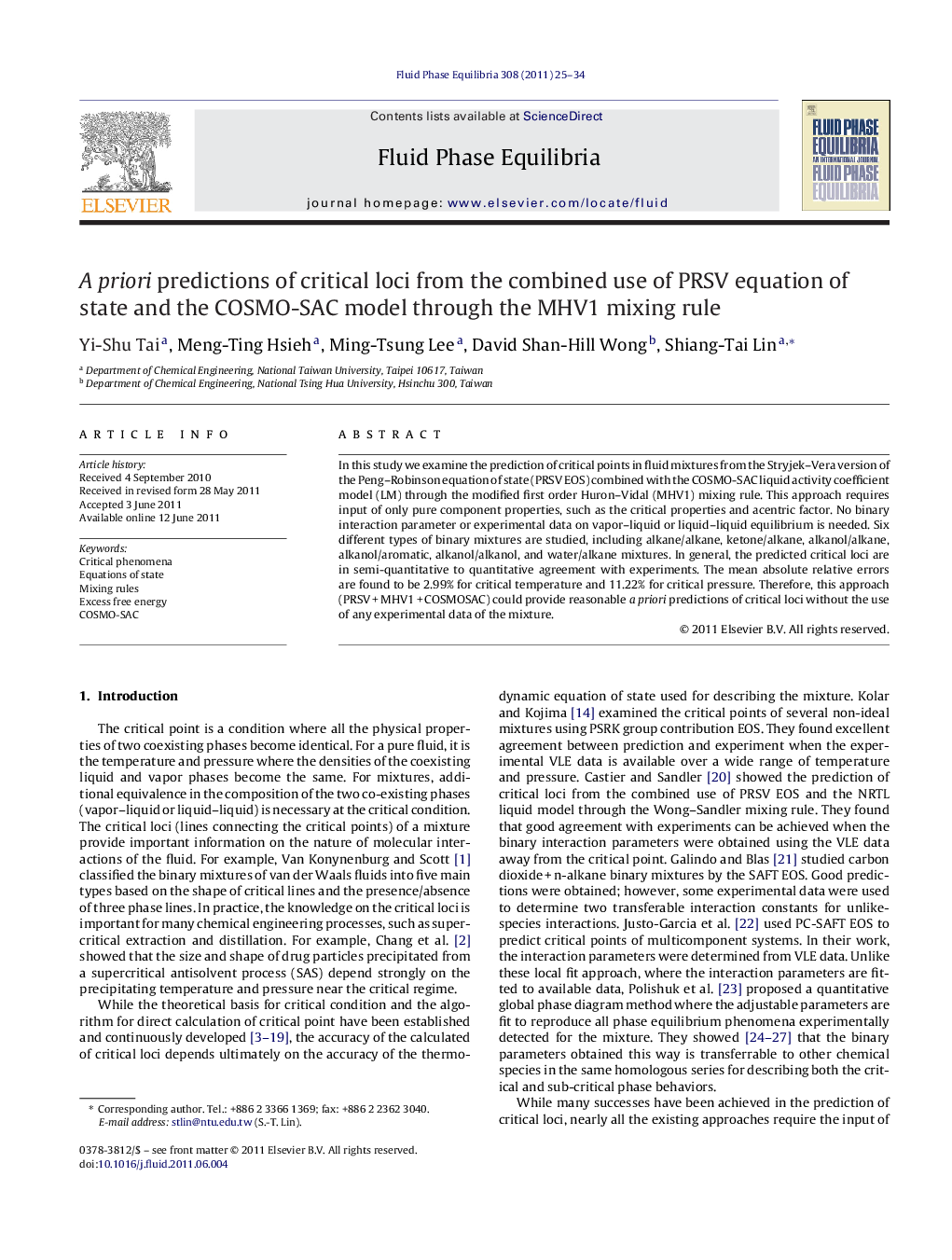| کد مقاله | کد نشریه | سال انتشار | مقاله انگلیسی | نسخه تمام متن |
|---|---|---|---|---|
| 204412 | 460727 | 2011 | 10 صفحه PDF | دانلود رایگان |

In this study we examine the prediction of critical points in fluid mixtures from the Stryjek–Vera version of the Peng–Robinson equation of state (PRSV EOS) combined with the COSMO-SAC liquid activity coefficient model (LM) through the modified first order Huron–Vidal (MHV1) mixing rule. This approach requires input of only pure component properties, such as the critical properties and acentric factor. No binary interaction parameter or experimental data on vapor–liquid or liquid–liquid equilibrium is needed. Six different types of binary mixtures are studied, including alkane/alkane, ketone/alkane, alkanol/alkane, alkanol/aromatic, alkanol/alkanol, and water/alkane mixtures. In general, the predicted critical loci are in semi-quantitative to quantitative agreement with experiments. The mean absolute relative errors are found to be 2.99% for critical temperature and 11.22% for critical pressure. Therefore, this approach (PRSV + MHV1 + COSMOSAC) could provide reasonable a priori predictions of critical loci without the use of any experimental data of the mixture.
► Prediction of critical points of fluid mixtures using PRSV + MHV1 + COSMOSAC.
► Binary mixtures containing alkane, ketone, alkanol, aromatic, and water are studied.
► Results are in semi-quantitative to quantitative agreement with experiments.
► A priori predictions of critical loci are obtained without using any mixture data.
Journal: Fluid Phase Equilibria - Volume 308, Issues 1–2, 25 September 2011, Pages 25–34